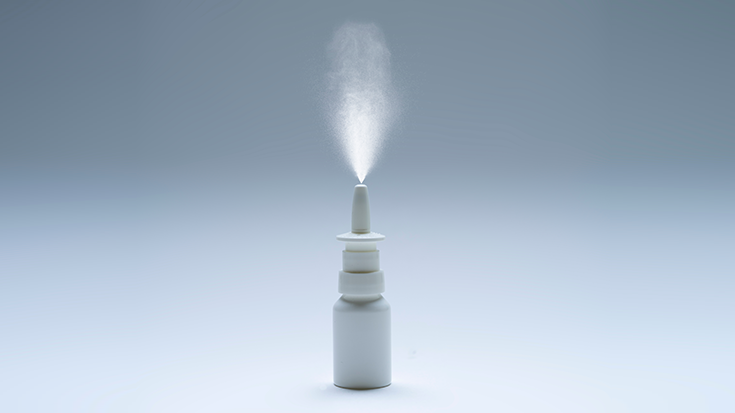
New Test Predicts COVID-19 Severity
Treating COVID-19 patients could be much easier if clinicians knew which patients would most likely develop severe disease. Researchers from the University of Virginia (UVA) have developed a new genetic test they believe could accomplish that goal.
The test, called CovGENE, is based on an immune cell signature distinct from other respiratory diseases and correlates with worse outcomes. The signature can be identified through an analysis of a blood sample. The test involving more than two dozen patients in the ICU at UVA and 100 others from publically available data generated by Duke and Harvard was more than 90% effective in predicting outcomes.
CovGENE was developed by AMPEL Biosolutions, which is now seeking a partner to bring the approach to market.
“This unique collaboration with our colleagues from the University of Virginia has provided an easy and novel means to assess an individual patient’s response to the SARS-CoV-2 virus and predict the clinical outcome,” said AMPEL CEO Peter Lipsky, MD. “Now that this unique approach has been validated, we look forward to its rapid development as a precision-medicine tool that can improve the outcome of patients with COVID-19 and reduce the number of hospitalizations, especially the most vulnerable.”
The study was published by Frontiers in Immunology. Read More
Could Smartphones Sub as Pulse Oximeters?
Measuring blood oxygen levels with a pulse oximeter at home has become commonplace during the COVID-19 pandemic. Still, only some have been able to access a pulse oximeter when they need it most.
Almost everyone, though, has a smartphone. So researchers from the University of Washington (UW) and the University of California San Diego (UC San Diego) think the smartphone could be a good stand-in for a pulse oximeter.
They reached that conclusion after conducting a proof-of-principle study in which six subjects received a controlled mixture of nitrogen and oxygen. This mixture artificially lowered their blood oxygen levels. The subjects then placed their fingers over the camera and the flash of a smartphone, and the phone used a deep-learning algorithm to assess their blood oxygen level.
Senior author Edward Wang, who started the project as a UW doctoral student and is now an assistant professor in UC San Diego’s Design Lab and the department of electrical and computer engineering, explains.
“The camera is recording a video: Every time your heart beats, fresh blood flows through the part illuminated by the flash,” he said. “The camera records how much that blood absorbs the light from the flash in each of the three color channels it measures: red, green, and blue. Then we can feed those intensity measurements into our deep-learning model.”
Subjects wore a traditional pulse oximeter while doing the test, and results showed the phone correctly identified low blood oxygen levels 80% of the time.
“In an ideal world, this information could be seamlessly transmitted to a doctor’s office,” said study co-author Dr. Matthew Thompson, a professor of family medicine at UW. “This would be really beneficial for telemedicine appointments or for triage nurses to be able to quickly determine whether patients need to go to the emergency department or if they can continue to rest at home and make an appointment with their primary care provider later.”
The study was published by npj Digital Medicine. Read More
Mask Initiative Reduces Facial Pressure Injuries
A Nebraska Medicine quality improvement initiative in four adult inpatient units has shown that transitioning from a single over-the-nose oral-nasal noninvasive ventilation mask to a single-headset, interchangeable under-the-nose and over-the-nose oral-nasal noninvasive ventilation mask significantly reduces facial pressure injuries.
The initiative also called for polyvinyl chloride nasal cannulas to be replaced with soft cannulas and introduced a mask rotation schedule calling for noninvasive masks to be replaced every four hours. Hydrocolloid dressings used under the masks were stocked in easily accessible locations. They were also packaged with noninvasive ventilation machines to provide convenient access at the initiation of oxygen delivery.
No medical device-related pressure injuries were reported in patients who were using the trial devices over the two-month study. That compared to five in the 60-day pre-intervention period and two in patients during the intervention who were not switched to the trial devices.
The study was conducted in November and December of 2020, during the Delta wave of COVID-19, and two of the units were COVID units. Nurses and respiratory therapists were involved in the research and were required to complete an education module before participating in the study.
The study was published by Critical Care Nurse. Read More
CDC Alerts Pediatric Providers to Rising Cases of RV, EV, and EV-D68 Respiratory Infections in Children
The CDC issued a health advisory regarding an increase in the number of children who have required hospitalization for a severe respiratory illness and who have also tested positive for rhinovirus (RV) and/or enterovirus (EV).
Some of the specimens have been positive for enterovirus D68 (EV-D68) as well, and the CDC notes that pediatric acute respiratory illness sentinel surveillance sites report a higher proportion of EV-D68 positivity in children who are RV/EV positive compared to previous years.
EV-D68 has been associated with acute flaccid myelitis, a rare but serious neurologic complication involving limb weakness.
The health advisory includes recommendations for health care providers aimed at helping them identify and treat these infections. Read More
Algorithm Predicts Long-Term Survival from COPD
An algorithm for predicting COPD mortality published in 2017 by Burgel et al. has been validated in a new study that assessed the algorithm in two different patient cohorts.
The investigators used data from the PRAXIS and Rotterdam studies to test the algorithm, which divides COPD patients into five clusters based on comorbidities, the Medical Research Council score, FEV1, and other factors.
The researchers looked at survival for patients in the five clusters at three, nine, and 12 years. Mortality rates ranged from a high of 79% at 12 years for patients in Clusters 1 and 4 to a low of 5% for patients in Cluster 5 at nine years.
“Burgel’s clinical clusters can be used to predict long-term mortality risk,” concluded the authors. “Clusters 1 and 4 are associated with the poorest prognosis, Cluster 5 with the best prognosis, and Clusters 2 and 3 with intermediate prognosis.”
The study was published by COPD. Read More
Microrobots to the Rescue
Could tiny microrobots be the answer to treating life-threatening cases of bacterial pneumonia?
Scientists from the University of California San Diego believe the answer may be yes. The nanoengineers designed a microrobot capable of swimming around the lungs and delivering medication to clear up the infections. When they tested it in mice, all of the mice who received the treatment survived. Those who didn’t died within three days.
The microrobots are made out of algae cells whose surfaces are speckled with antibiotic-filled nanoparticles. The algae allows the microrobots to move freely about the lung. The nanoparticles containing the antibiotics are made of tiny, biodegradable polymer spheres that are coated with the cell membranes of neutrophils, which absorb and neutralize inflammatory molecules produced by bacteria and the body’s immune system.
The microrobots were more successful in treating the infection than an IV dose of medication, even though the microrobot dose was significantly lower, 500 nanograms vs. 1,644 milligrams.
“With an IV injection, sometimes only a very small fraction of antibiotics will get into the lungs. That’s why many current antibiotic treatments for pneumonia don’t work as well as needed,” said study author Victor Nizet. “Based on these mouse data, we see that the microrobots could potentially improve antibiotic penetration to kill bacterial pathogens and save more patients’ lives.”
The study was published by Nature Materials. Read More
Email newsroom@aarc.org with questions or comments, we’d love to hear from you.















